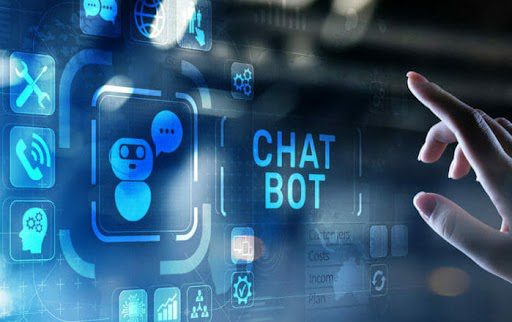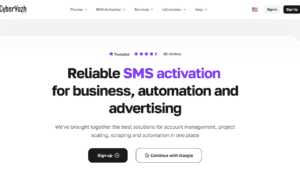Chatbots are becoming increasingly integral to their online touchpoints for applications such as reminders to provide answers to frequently asked questions about a product or service; they are key components of business communication today.
Looking at chatbot’s emergence in the recruitment industry, we see a similar trend of its adoption for enhancing candidate engagement. The stats also speak in its favor: a CareerBuilder survey states that 67% of aspirants had positive impressions about organizations that kept them in the loop throughout the recruitment process. A survey by Sense and Talent Board mentions how 42% of hiring teams face issues connecting with the right talent in a timely and personalized manner, while 51% of respondents credit the implementation of chatbots for improving the candidate experience. Chatbots have the potential to be game-changers in improving the candidate experience and employer brand.
Like most tech, chatbots have gone through multiple iterations and improvements to reach the point where they are commonly powered by Artificial Intelligence. In this article, we are going to go back in time to trace the evolution of chatbots. But before that, let’s define a chatbot, especially in light of recruiting.
What is a Chatbot?
Wikipedia says, “chatbot or chatterbot is a software application used to conduct an online chat conversation via text or text-to-speech, instead of providing direct contact with a live human agent.”
Like an instant messaging system, a chatbot is a software program or system (even an application) tailored to automate and execute the repetitive task of communicating with multiple candidates.
How does Chatbot Work?
Chatbots are made for specific reasons and can base their requirements, and working can be broadly divided into two categories:
Working with a rule-based chatbot
Rule-based chatbots store particular questions and their answers. They use a simple true-false algorithm to understand user queries and provide relevant answers.
However functional they have a limited range of comprehending and responding.
Working with an AI-based chatbot
Modern chatbots typically use a mix of natural language processing (NLP), and artificial intelligence (AI) to understand conversations in real-time and answer queries (even open-ended ones) referring to a mix of historical data and inferred information.
As such, chatbots learn from the interactions and continue to improve the more, it’s used.
How Have Chatbots Evolved Over Time?
The origin of the chatbot is attributed to the vision of Alan Turing in the 1950s for his work on a machine that recognizes and responds to patterns. That said, ELIZA is considered the very first Chatbot, created in 1966 by Joseph Weizenbaum at the Artificial Intelligence Laboratory at MIT. It could generate responses via a mechanized procedure involving the recognition of various phrases and keywords from the given inputs to show responses (related to the keywords in question) that were pre-programmed. Rollo Carpenter also came out with the Jabberwocky in the 1980s, which had a short-term but functional memory and could answer various questions. Several versions of it have been released ever since, including ALICE in the 2000s – the developmental inspiration model for most chatbots in recent years.
Back in the 2010s, several home and virtual assistants came into the picture, including Google Assistant, Siri, Alexa, and Cortana. In addition to chatting, this software can also help users with sending messages, checking for information on the web, weather status, navigation, and more.
With the rapid growth of AI in the mid-2010s, chatbots are much more intelligent and powerful now. Backed by NLP (Natural Language Processing) and machine learning, these can now analyze and break down finer aspects of communication and idiosyncrasies to imitate and personalize more human-like responses.
Challenges of Modern Chatbots
Chatbots in their current popular form can be inaccurate or ineffective for usage in your more sophisticated area of recruiting. This is because automated scripted information and interactions may lack the personalization that comes with a human touch. These tools also may be unable to understand and answer all kinds of questions correctly and deduce their subjective meaning. As factual information available online from different sources may not be in sync, the ones provided by these bots also can be questionable. On the accessibility front, integrating chatbots with some recruitment applications can raise compatibility issues.
How AI is Improving Chatbots for Candidate Engagement
Powered by ever-improving AI, chatbots are becoming more efficient in addressing candidate engagement throughout the recruiting procedure.
The engagement process with multiple candidate aspirants is being automated now on a 24×7 basis. These tools not only provide helpful direction and updates to candidates but also extract vital information through conversations, screening profiles, analyzing messages, and other communications, which helps them provide smart recommendations and responses.
Personalized recommendations are another area where chatbots have greatly improved because of AI. They also play a role in enhancing and showcasing the organization’s employer brand. There are configurable bots that sync with updated company info, brand philosophies, and guidelines, ensuring greater consistency in communication. They also keep learning from conversations with diverse candidates, further improving their usefulness as the chatbot learns and adapts.
Conclusion
With the growing importance of proper candidate engagement in a talent-driven marketplace, companies are open to leveraging chatbots to keep their candidate pools fruitfully engaged. Thankfully, AI has greatly contributed to making modern-day chatbots more efficient, accurate, and helpful for candidates in the recruitment procedure.
As these chatbots become an integral feature of a comprehensive AI-based recruitment tool that can take care of sourcing, sorting, and even selecting candidates based on recruiter inputs, it becomes a convenient way to engage candidates quickly, efficiently, and with a more personal touch. . This saves employers both time and cost of hiring, which translates into recruiting organizations having more bandwidth for relationship-building and strategically growing the business.


































